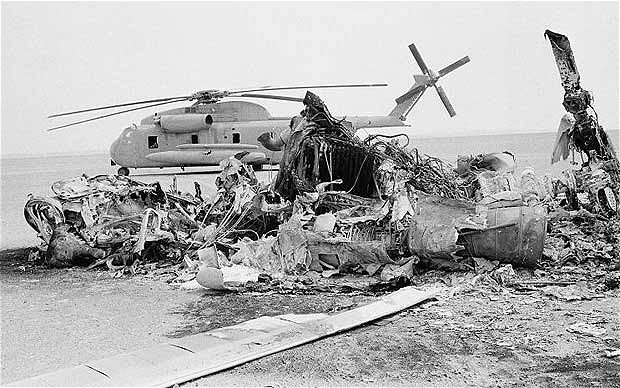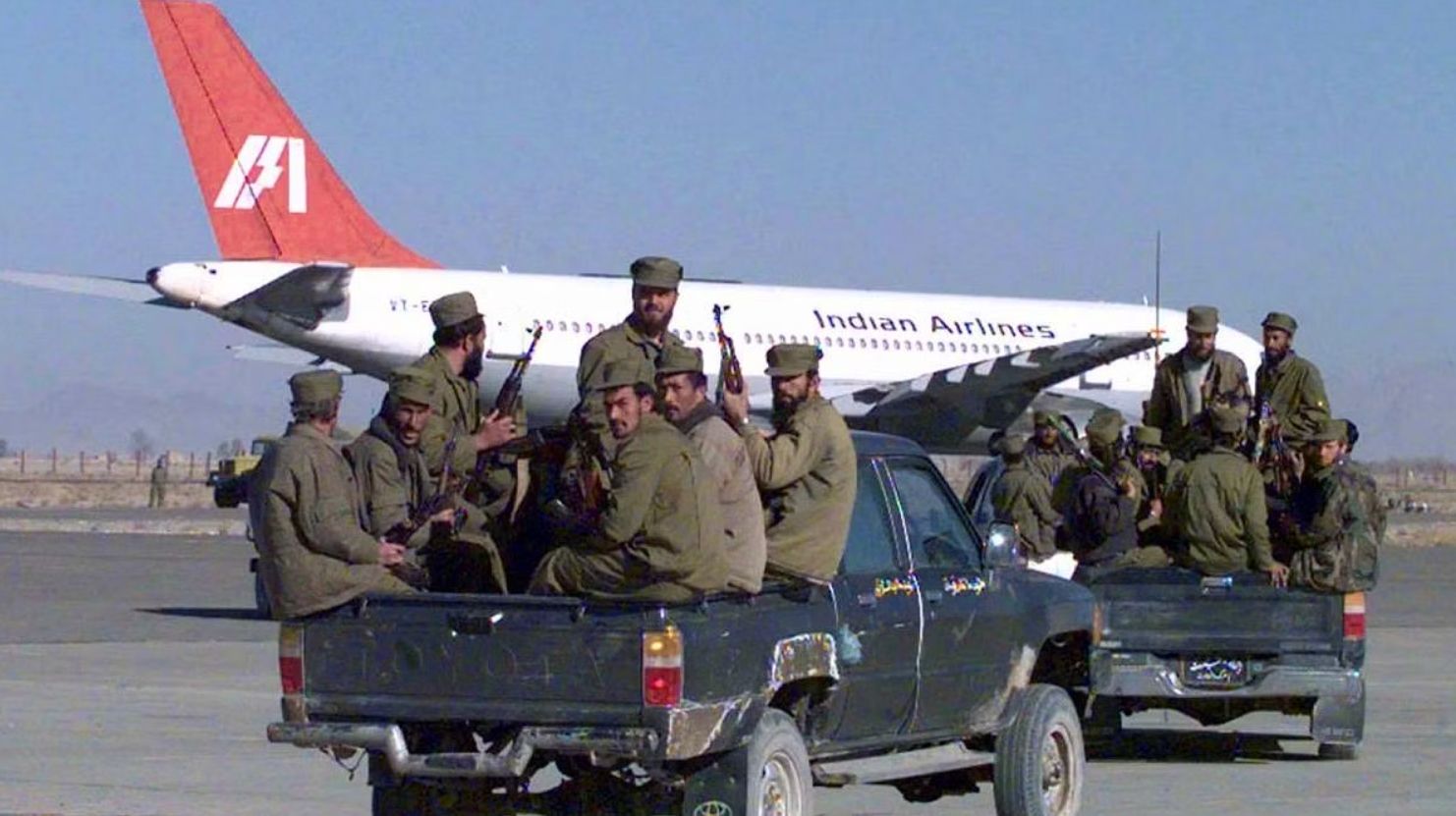Two of the most daring rescue operations in recent times — one a success, the other a failure — are the finest examples of what air power, if used judiciously by professional airmen, can do to enhance national prestige. A brief mention of these rescue attempts is listed below:
Op Thunderbolt was the name of a successful mission executed on July 3-4, 1976, by the Israeli Military to rescue 107 hostages of a French airliner who were taken to Entebbe. An excellent example of the use of air power by the Israeli Air Force resulted in the freedom of hostages safely.
Op Eagle Claw, flown by USAF in 1980 to liberate US embassy staff held hostage in Iran, failed. Failure of this rescue mission cost Jimmy Carter his presidency. It was an extremely complex operation with a virtually non-existent margin of error in execution. Any voluntary or unforeseen deviation from the original plan would fail.
That is precisely what happened. Adverse weather en route, poor coordination among aircraft involved, and unforeseen accidents at the landing site led to failure. Tragedy hit the mission when the rotor blades of the RH-53 helicopter hit a fuel-laden EC-130, killing five airmen and three marines.
US air power decided to execute this mission despite a highly adverse situation because there was no other option to rescue American embassy staff. What followed is history. The failure led to the creation of the Air Force Special Operations Command (AFSOC).
Causes Of Failure Of Op Eagle Claw
Inquiry to ascertain the causes of the failure of Op Eagle Claw established that the operation failed due to a flawed command structure. The mission commander was a US Army Major General.
He had a USAF Colonel as an advisor. There is a lot of difference between an advisor and a decision-maker. The then Joint Chief of Staff corrected this anomaly.

Air Force Operations Special Command was created. These three events highlight an elementary fact – Let the specialist be the decision-maker and executioner.
During the past three decades, USAF has progressively created a much smaller and independent command structure to ensure that mission tasking, planning, and execution are carried out by those who can analyze and understand the complexities of the mission.
Decentralization of executive power is the buzzword. Over-centralization is the first step toward an impending disaster.
Recent Rescue Mission By AFSOC
USAF flew a recent daring rescue of a US citizen from Nigeria on October 31, 2020. To date, this mission remains the longest-duration mission. USAF Ospreys flew 11-hour long mission in the dead of night. Intelligence reports indicated that the abducted US citizen was seen at a location.
Kidnappers had been moving out from their hideouts within a day or two. Hence time available to launch a rescue mission was at a premium and had to be launched without delay. Only air power elements could execute the mission instantly.
Air Force Special Operations Command planned the mission in a matter of hours. Team selection and mission details were worked out before the day was over. The mission was launched in the evening.
Members of the USAF took off from Naval Station Rota in Spain to fly to a little-known location in Nigeria 3,200 kilometers away. The mission comprised three CV-22 Osprey Tiltrotor (carrying a SEAL team), MC-130Js (for mid-air refueling of Osprey), AC-130J Gunship, and a US Navy P-8A.
The mission’s complexity increased because MC-130Js had to be refueled by KC-135s en route. Mid-air refueling is a highly complex mission. To maintain secrecy, the mission was flown at night.
The exact coordinates of the probable hostage site were not known to the mission leader. The SEAL team was dropped about three kilometers from the suspected area. The SEAL team successfully reached the kidnappers’ hideout, neutralized the kidnappers, and freed the hostage, an American citizen.
The entire team flew back after accomplishing the mission without incurring any losses. The flawless execution of the task was achieved due to a well-trained team of USAF.
India’s Capability To Undertake Such Missions
Without being critical of their equipment capability, India’s thought process about handling hostage situations is exceptionally conservative.
An unquestionable example of such an approach and attitude is the abysmal failure and callous decision-making at the highest level while handling the 1999 Indian Airlines hijack issue. It was, perhaps, the only case wherein the hijacked aircraft landed in the country to which it belonged.
The hijacked flight landed at Amritsar for refueling, but our decision-makers gave a pathetic account of themselves and not only provided fuel but allowed it to take off. The rest is history.
Allowing hijacked aircraft to take off from Amritsar would remain one of the most despicable and disastrous actions taken by the then-top leadership, which resulted in the release of dreaded terrorists in exchange for passengers.
In most cases of hostage rescue situations, the military/police merely execute the order of top leadership. Stopping the hijacked aircraft from taking off from Amritsar simply required blocking the runway by positioning obstructions such as vehicles and barriers, which were available.
The captain and co-pilot of the aircraft could have played the most crucial role. Hijackers would not have killed the pilots because the aircraft could not have been flown.
Now, about the role of passengers:
The most notable instance of collective bravery demonstrated by passengers relates to the ill-fated United Airlines flight 93 on 9/11. Due to passengers attacking the hijackers, the aircraft failed to strike the probable target, the White House. In the Indian case, passengers merely remained mute witnesses.
Indeed, any attack on hijackers would have resulted in few casualties, but the end result would have been favorable to India and Indians, but it was not to be.

Paralysis in decision-making was also attributable to India not having a trained outfit to handle such contingencies. Special heliborne forces equipped with the latest weapons are absolutely essential.
Such events and contingencies are not planned. They happen. Air power, in most cases, will remain the most important entity to achieve a favorable outcome while rescuing the hostages.
In addition, such missions can only be executed if the nation is equipped with a variety of force multipliers such as AEW/AWACS, AARs formidable and reliable helicopter fleet and suitable transport aircraft.
India has miles to go before such missions can be undertaken, if and when needed.
- Gp Cpt TP Srivastava (Retd) is an ex-NDA who flew MiG-21 and 29. He is a qualified flying instructor. He commanded the MiG-21 squadron. He is a directing staff at DSSC Wellington and chief instructor at the College of Air Warfare. VIEWS PERSONAL
- Follow EurAsian Times on Google News




